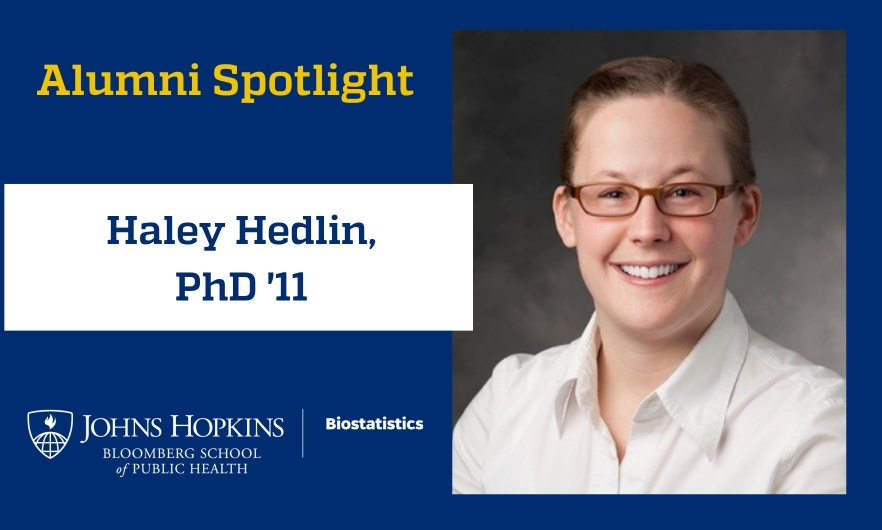Haley Hedlin, PhD '11
Haley Hedlin, PhD '11, is a Senior Biostatistician and Associate Director of Clinical Trials Program in the Quantitative Sciences Unit, in the Stanford Department of Medicine.

Haley Hedlin, PhD '11, is a Senior Biostatistician and Associate Director of Clinical Trials Program in the Quantitative Sciences Unit, in the Stanford Department of Medicine.
Hedlin wrote her thesis, "Statistical Methods for Intersubject Analysis of Neuroscience Data," under the direction of Brian Caffo. She has a joint postdoctoral fellowship with the University of Massachusetts and the Five College Consortium in western Massachusetts.
How did you get interested in the field of biostatistics? What was your background before enrolling at Hopkins?
Before enrolling at Hopkins, I was a math major with minors in statistics and linguistics at St. Olaf College. I enjoyed the statistics research I participated in as an undergraduate, so I decided to apply to biostatistics and statistics graduate programs. Like many others, I was drawn to biostatistics because of the fascinating research possibilities.
Describe your current position and responsibilities in a way that will inform prospective students about career opportunities in biostatistics.
I am a senior biostatistician in the Quantitative Sciences Unit, a collaborative group of biostatisticians housed in the Department of Medicine at Stanford University. I work in a wide range of areas of medicine and I use different types of statistical methods, depending on the research project.
In my position, I work with collaborators to design studies, oversee and monitor ongoing studies, manage and curate data, perform statistical analyses, and disseminate findings.
Can you describe your day-to-day life at this position?
I spend some days meeting with collaborators and colleagues to discuss ongoing projects. During the meetings with collaborators, I might be explaining statistical concepts with them, at another meeting we might be thinking about how to design a study to address the research question at hand or how to interpret the results of a study.
Other days, I set much of the day aside for data analysis, writing, thinking about a study design, or learning new methods.
On any given day, I might attend a research seminar or meet with other statisticians to brainstorm about a research question or to discuss a journal article.
How did Johns Hopkins Biostatistics prepare you for your career? What aspects of the program did you find most useful?
The aspects of the program that I found most useful were the close research collaborations with faculty inside and outside of the department and school, teaching at the American University of Armenia, and the willingness of senior students to share their experience with the newer students in the department.
What are your favorite memories of your time at Johns Hopkins Biostatistics?
The camaraderie among the students. When we were in classes, the spirit was collaborative instead of competitive. Once we had completed our coursework, students met regularly for lunch and occasionally organized dinners.
What advice would you give to prospective students?
Take advantage of the wide range of opportunities that present themselves as a graduate student in the department. It is easy to get caught up in the constant deadlines of courses or thesis work, but many of my valuable experiences during graduate school came from sources outside of course or thesis work.
